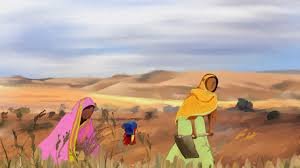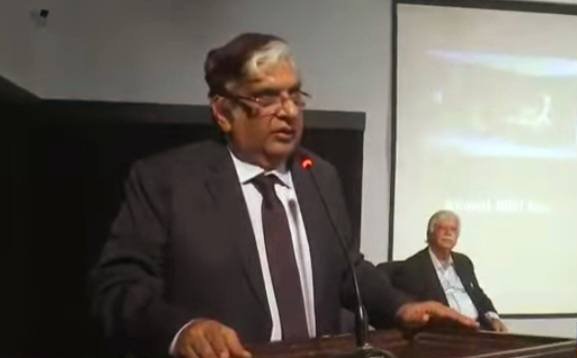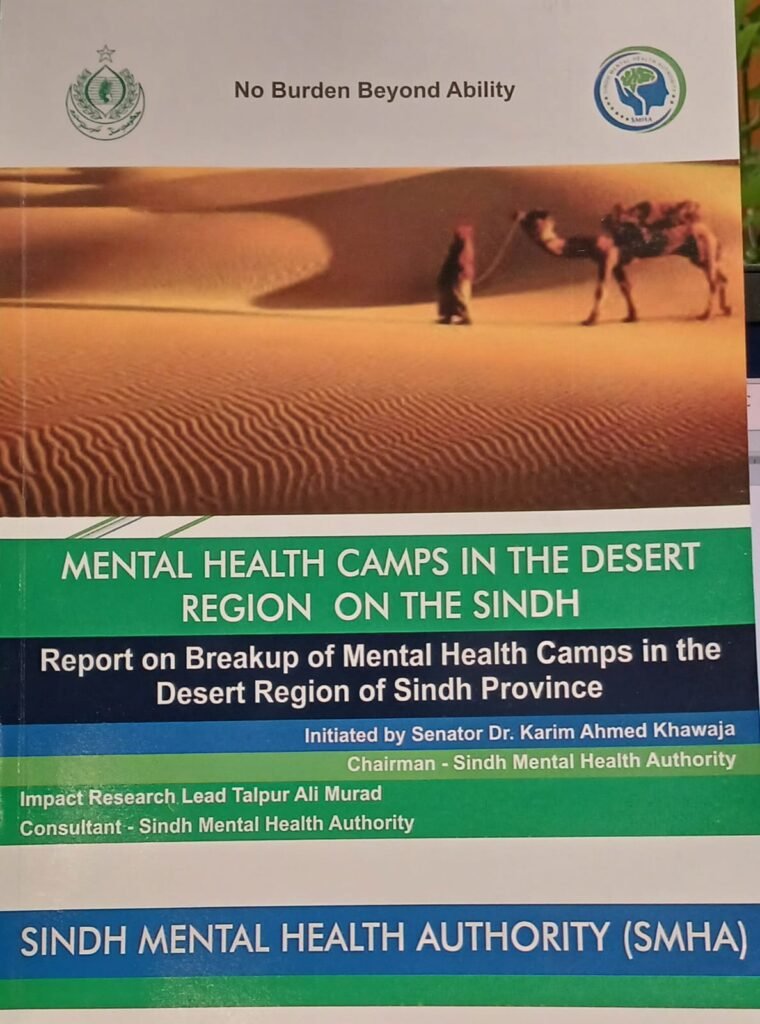PAKISTAN
A mental health initiative of the Sindh Mental Health Authority (SMHA), covering over four and a half thousand subjects, has revealed that over 37 percent of the people—predominantly women and adolescent girls—suffer from depression in the desert belt of Sindh, which stretches over 50 thousand square kilometers.
Led by Senator Dr. Karim Ahmed Khawaja, the authority delivered landmark mental health camps across the desert belt districts of Tharparkar, Umerkot, Sanghar, and Khairpur between 2022 and 2025, the authority’s communication and team members said.
The Thar Desert—the largest desert in Pakistan—covers an estimated area of 45,000 to 50,000 square kilometers within Sindh Province. In Sindh, the Thar Desert stretches across Tharparkar, Umerkot, Mirpurkhas, Sanghar, Khairpur, and parts of Sukkur and Ghotki.
These camps were designed for the general population, with a strong emphasis on women and adolescent girls, who face disproportionate barriers to mental healthcare due to poverty, cultural restrictions, and service inaccessibility. Over 4,570 individuals received free psychiatric consultations, diagnosis, treatment, psychosocial support, and medications during the initiative. Clinical data revealed that depression (34.7%) was the most common condition, followed by anxiety disorders (11.3%), intellectual disability (11.9%), epilepsy (9.02%), somatoform/conversion disorders (8.61%), and substance use disorders (4.0%).
The initiative was guided by a Council of Advisors comprising senior mental health experts, public health professionals, development specialists, and community leaders who ensured strategic direction, technical oversight, and cultural sensitivity in service delivery. Mental health experts from leading institutions, including Jinnah Postgraduate Medical Centre (JPMC), Dow University of Health Sciences (DUHS), Liaquat University of Medical and Health Sciences (LUMHS), University of Karachi (UoK), Thar Foundation, Ghulam Muhammad Mahar Medical College Sukkur (GMMMC), International Organization for Migration (IOM) UN, Jinnah Sindh Medical University Karachi (JSMU), Peoples Primary Healthcare Initiative (PPHI), Syed Abdullah Shah Institute of Medical Sciences, Sehwan (SASIMS), Institute of Clinical Psychology Karachi (ICP), Department of Psychology, University of Sindh, and Sir Cowasjee Institute of Psychiatry & Behavioural Sciences, volunteered their time and expertise to provide high-quality consultations and counselling.
Field implementation staff and district-level focal persons coordinated on-ground logistics, identified camp locations, mobilized communities, and ensured smooth operations before and during the clinics. The on-site assessment teams, comprising civil society members and local coordinators, verified camp readiness, setup, and patient facilitation to maintain dignity and confidentiality during consultations.
The Impact Research component, led by Mr. Talpur Ali Murad, Social Scientist and Researcher, documented the clinical outcomes, demographic patterns, and socio-structural determinants of mental illness in the desert belt. This evidence base will inform future mental health programming, policy reforms, and targeted interventions.
Senator Dr. Karim Ahmed Khawaja praised the collaborative spirit of the initiative, saying that this model proves that with dedication, strategic partnerships, and data-driven planning, mental health services can reach even the most remote and neglected communities in Sindh. It is a testament to what can be achieved when government, academia, and civil society work together.
Recommendations:
- Integrate mental health services into primary healthcare and school health systems
- Initiate tele-psychiatry mental health services in different RHCs in the Thar Desert region.
- Train LHWs and teachers in basic mental health screening and referral.
- Expand awareness campaigns to reduce stigma and promote early help-seeking
- Collect district-wise mental health data for planning and resource allocation
- Ensure cross-sector collaboration between health, education, and social protection departments
- Strengthen referral pathways to secondary and tertiary psychiatric care
- Provide blood screening services at the RHC level in the desert region
- Develop gender-sensitive programs targeting women and adolescent girls
- ER News Desk



